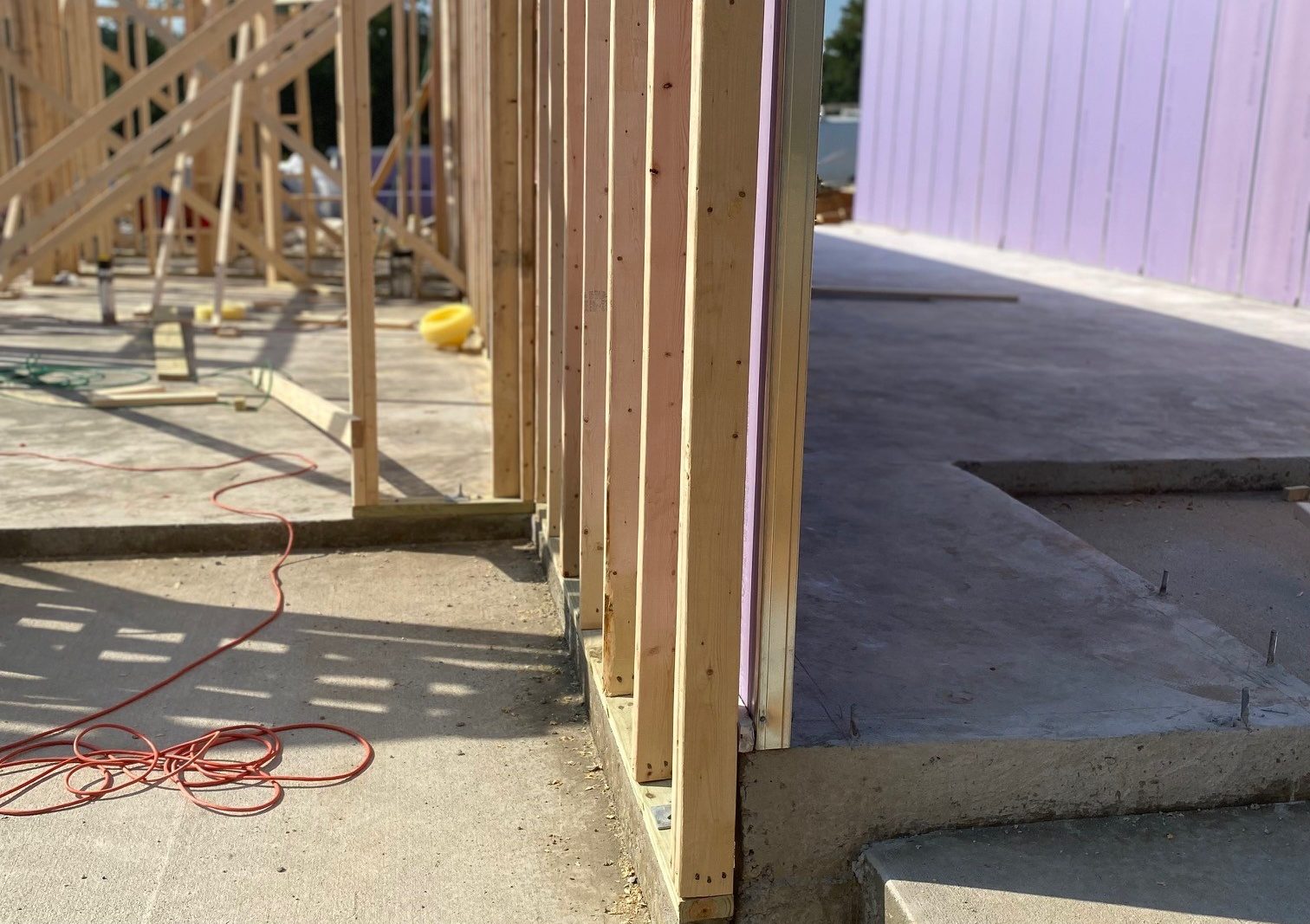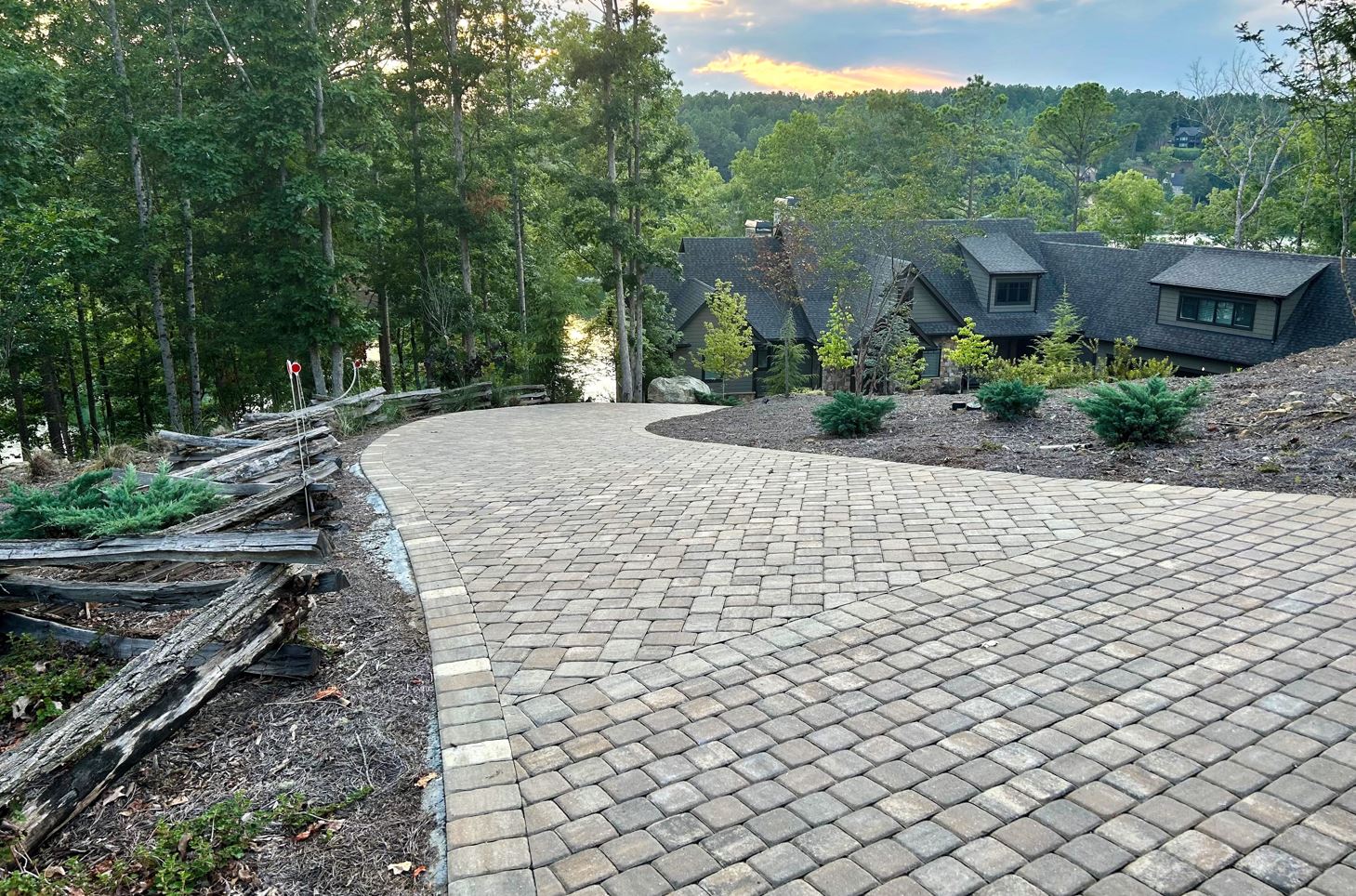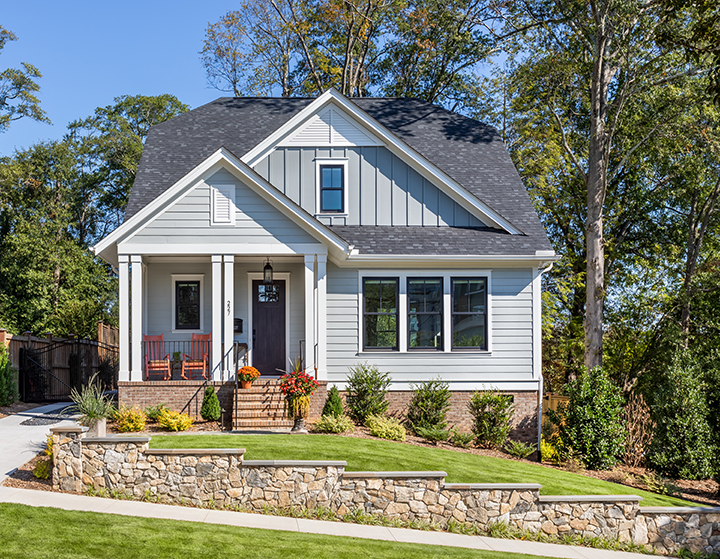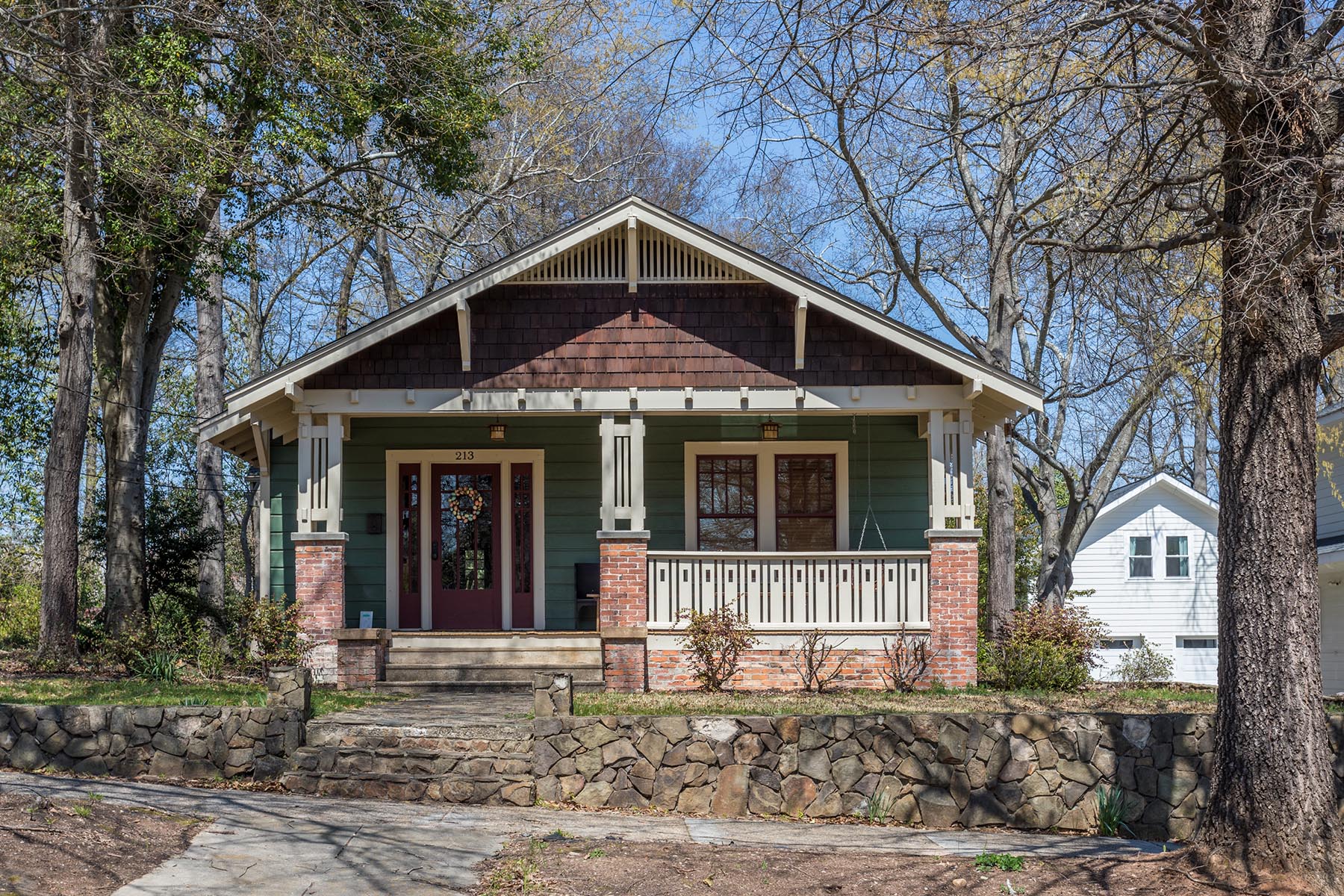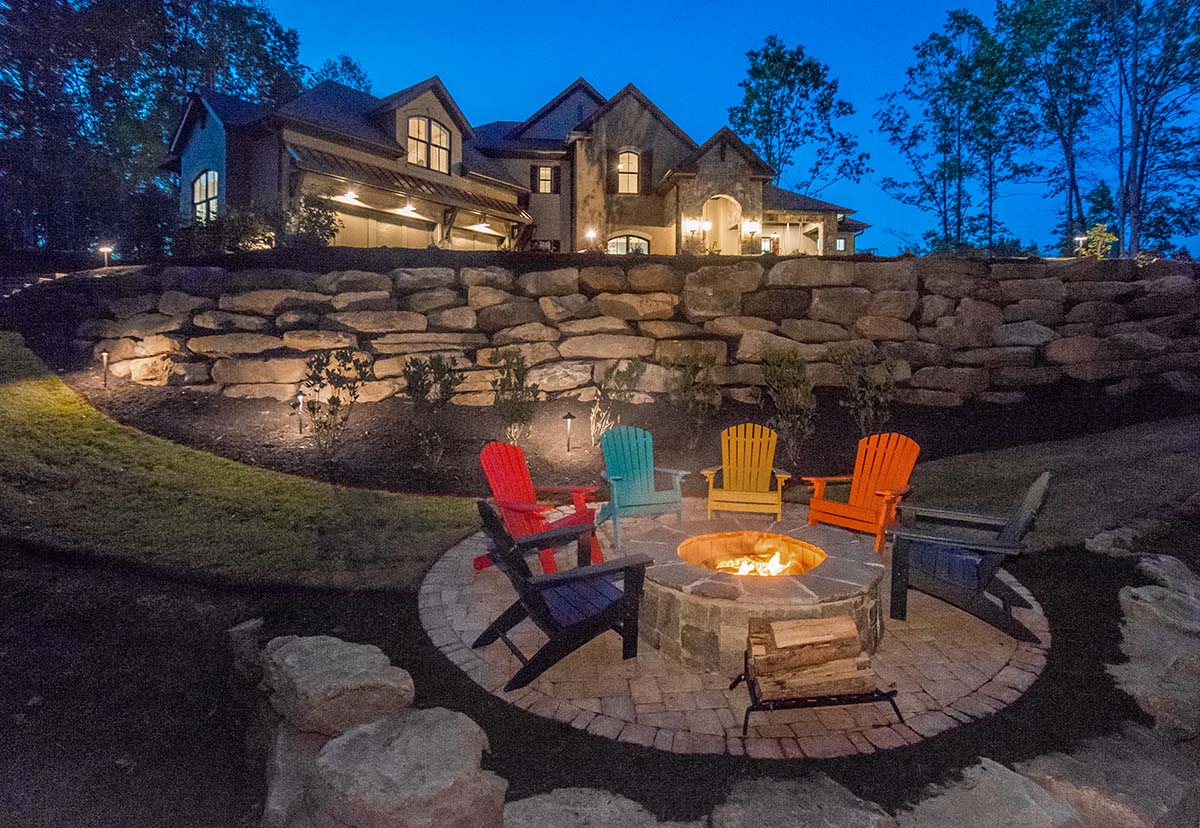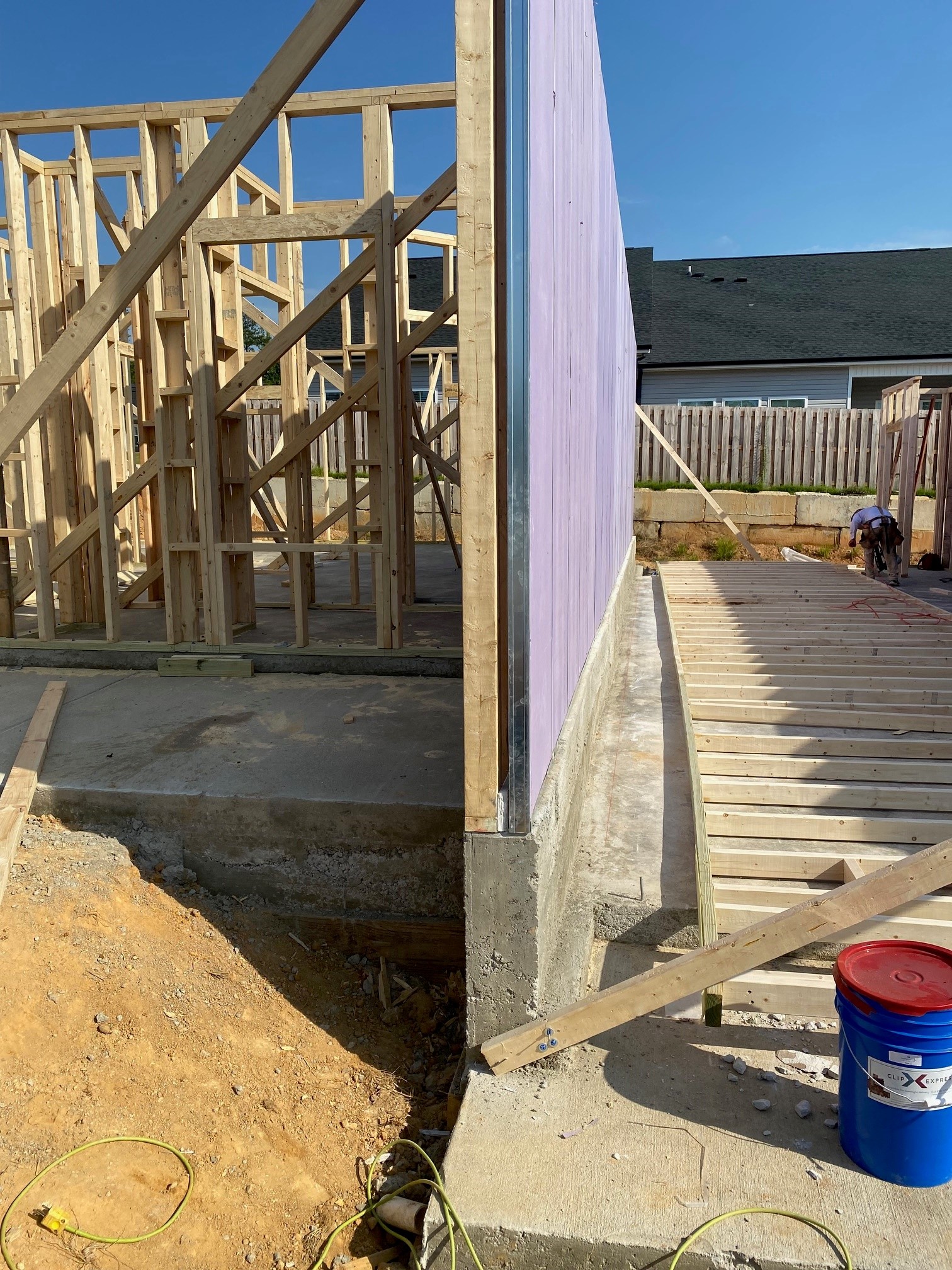Unless you live in Florida – like me, chances are you have encountered challenges with sloping sites. Let’s face it, we all prefer our structures to be level. These two phenomena are in opposition to each other. Solving this conflict takes both insight and dollars.
We often say that all the flat easy sites have been taken. Builders and developers are left with challenging sites. Perhaps there is a reason the site has been passed over in the past. Some sloping sites are desirable – say, one that slopes down to a lake affording three floors of lakefront views. But those three floors of water views come with a hefty price tag with basement and retaining walls.
Challenging Driveways
Then there’s the automobile. Getting a car up or down to the garage can often come with challenges. A house nearby has a super steep driveway. Ideally, you would mitigate the slope with couple of switch back curves winding down the hill. But in this case, there wasn’t enough width in the lot to accomplish that. The resulting drive is a challenge to negotiate downwards since you can’t see the edge of the pavement. In this case, the new owners added a split rail fence along the edge of the drive. Not to stop the car from driving over the cliff, but to add a visual that can be seen behind the steering wheel.
I’ve been told a 5% grade is a comfortable amount of slope for cars.
Site Retaining Walls
Before a site cleared, the inherent slope of the site may not be immediately observed. Ah – there’s more slope than meets the eye. One solution for sloping sites is mass grading the site and adding retaining walls. Perhaps the site can be broken up by multiple retaining walls.
Unfortunately. I’m told the price for retaining walls has jumped significantly (what hasn’t these days?) – anywhere from $30 to $50 per square foot. Additionally, not all retaining walls are created equal. These walls can be built from timbers, interlocking pavers, stone, poured in place concrete, and even giant boulders.
The Complexity of sloped Townhomes
When it comes to townhome design, dealing with sloping sites can be costly – just as builders are seeking ways to lower the cost of homeownership. Even assuming no more than a 4 to 5% side sloping grade, stepping in the building foundation is required. Of course, the longer the building, the more steps needed. There are many issues to consider when stepping a building.
If you have a flat-faced building, you could easily step each one down the hill – like books on a bookshelf. A building with lots of ins and outs has the added complexity of intersecting gables. But steps in the foundation also mean steps along the roof plane. Ideally, steps in the roof should be a minimum of 8” to allow flashing between roofs.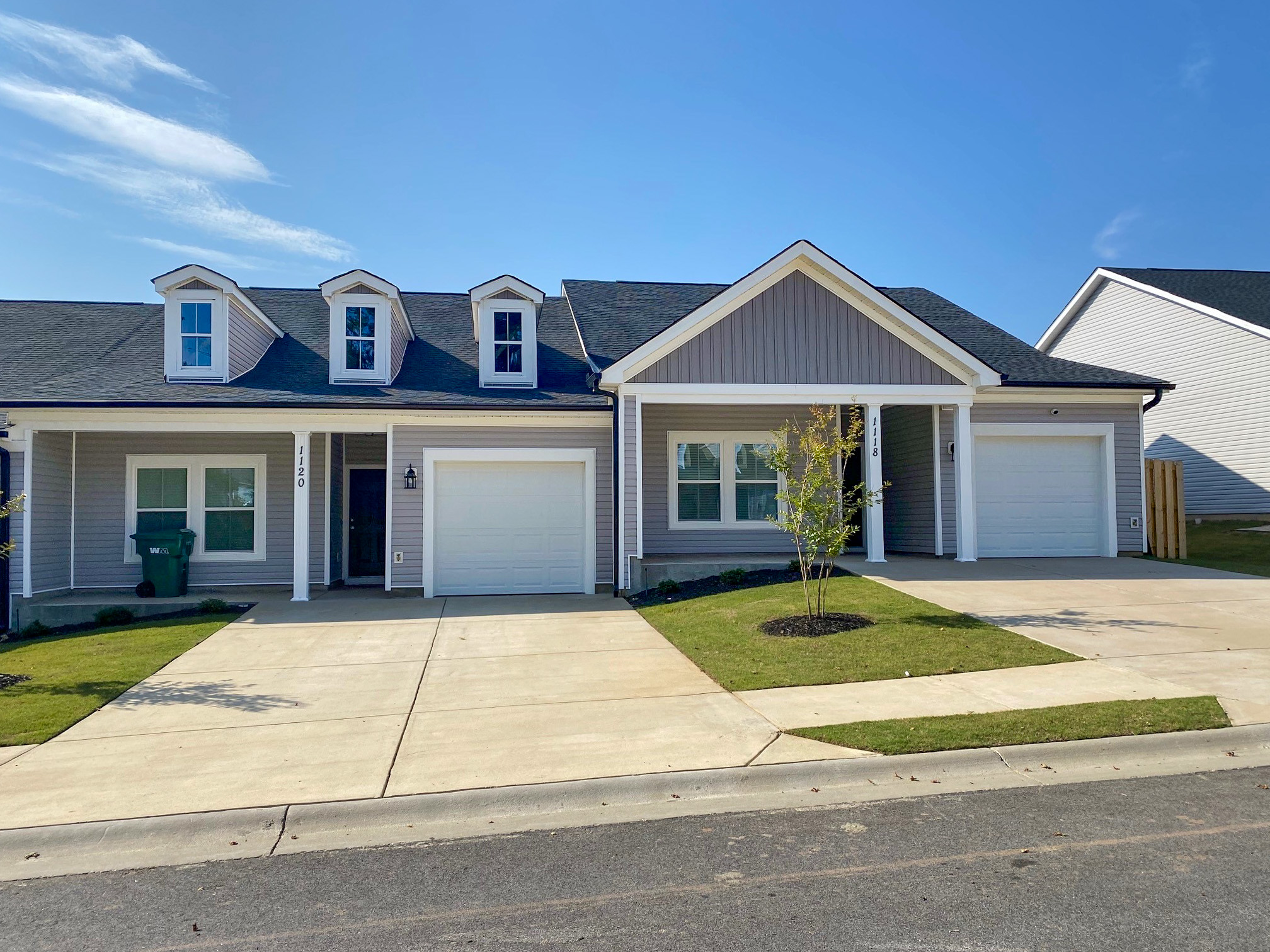
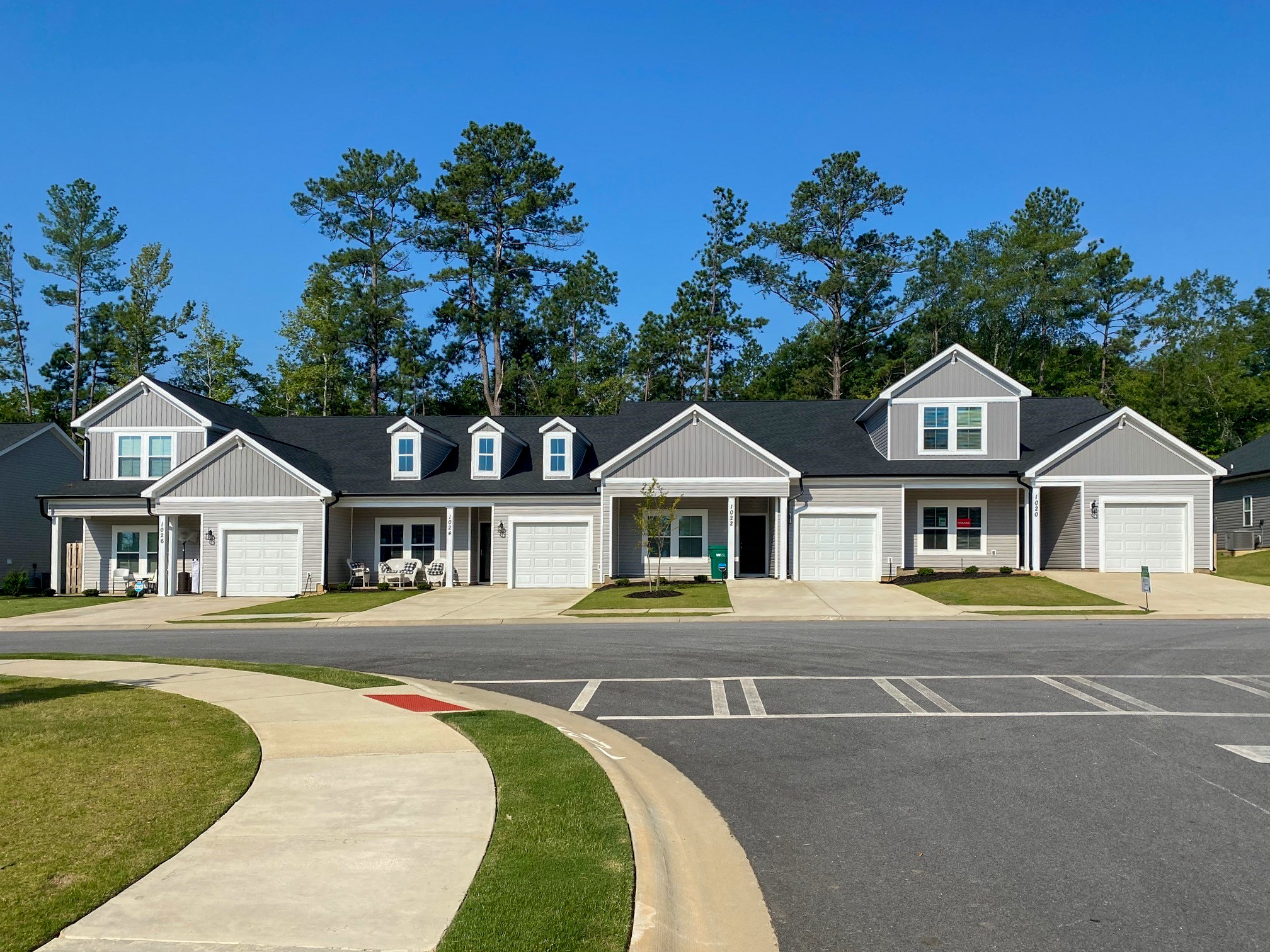 More than 12” steps between units will often create grading challenges between units at grade level– especially if there are garages.
More than 12” steps between units will often create grading challenges between units at grade level– especially if there are garages.
Sure, you can add small retaining walls between units – but be careful their height and proximity to the driveway. Imagine pulling into the driveway, opening your car door and hitting the side of a retaining wall. Or pulling out of the driveway, turning the wheel too soon, and *crunch* now you need a new bumper! Now imagine a 16” drop from one driveway to another – just the thing a teenage driver would drive off. Oops.
The narrower the unit, the greater the challenge, with little room between doors to make adjustments. One strategy to keep in your back pocket is the ability to drop a garage 12” to 18” below the finished floor of the house. Be sure to leave room for stairs in the garage that are beyond the parking area for the car.
Now add front to back slope along with side slope and it becomes almost mind numbing – especially if the townhomes are alley loaded. Perhaps you solved the driveway conditions on one side of the building only to discover steep steps needed just to get to the front door on the other side.
Collaboration
When faced with a sloping site, collaboration between the land planner and architect is essential. Without such collaboration, you could end up with driveways too steep, too many retaining walls for the budget, or every building on the site with a different stepping solution. Let’s avoid such catastrophes!
Since I began my architectural career in Florida, I have had to learn how to deal with challenging sites along the way. What tips and techniques have you utilized to tame steep sites? Do you have any nightmare sites that stand out in particular? I’d love to hear your thoughts!
Categorized in: Uncategorized
This post was written by Housing Design Matters


